Louis Vuitton boss Pietro Beccari bets big on luxury’s place in sport and hospitality
Bernard Arnault’s trusted lieutenant on fashion’s sporting ambitions and big hospitality ambitions to come.
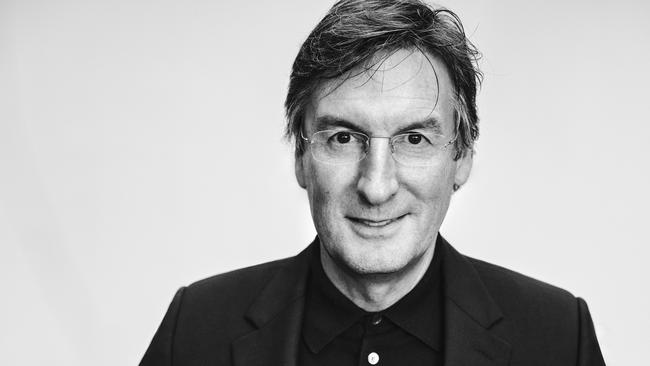
Italians love an Italian who succeeds abroad, and no luxury executive has enjoyed more success this century than Pietro Beccari, the chief executive of the industry’s largest house, Louis Vuitton. In a remarkable career, he has been the chief executive of three crucial mega brands in Bernard Arnault’s luxury LVMH empire: Fendi – when Karl Lagerfeld was creative director, Christian Dior and, since January 2023, Louis Vuitton.
Few executives in any industry are more hard charging than Beccari, who rises daily at 5.30am to oversee a brand with an estimated $34 billion in annual revenues. It’s the linchpin of LVMH, which also encompasses Celine, Loewe, TAG Heuer, Bvlgari, Berluti, Loro Piana, Givenchy, Tiffany & Co., Sephora, and probably half of the alcohol you currently have in your drinks’ cabinet.
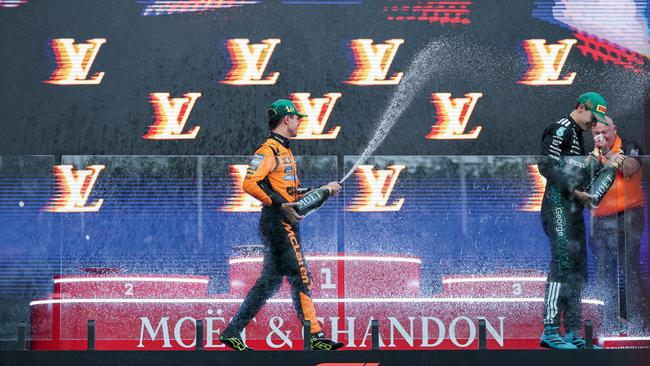
After nearly two decades at LVMH, Beccari is the most trusted lieutenant of Bernard Arnault, the controlling shareholder and chief executive of the luxury conglomerate, and one of the world’s richest individuals. In effect, Beccari is the Cardinal Mazarin to our contemporary luxury Sun King, an Italian who has won a series of brilliant victories for French fashion and design.
Beccari was born in 1967 in a small village near Parma, the wealthy northern Italian city and province famed for producing not just cheese and prosciutto but also ambitious and successful natives. Notable parmensi include Oscar-winning director Bernardo Bertolucci, composer Giuseppe Verdi and conductor Arturo Toscanini.
His youth and early career did not mark him out to become a titan of the luxury industry. Instead Beccari’s teenage dream was to play professional football. Although he supports AC Milan, he was actually on the books of Parma FC until he was 18. But the clearly still fit Beccari’s love of sport provides a leitmotif in his career. Shortly after joining Louis Vuitton in 2006 as executive vice-president of marketing and communications, he won immediate acclaim for his “Core Values” campaign featuring Diego Maradona.
Beccari believes the link with sport and luxury is self-evident, listing three key reasons.
“First, at Vuitton we want to position ourselves as a brand that doesn’t sell only bags. We’re really here to be part of contemporary culture, with our connection with artists and with our connection with society in general. If you think about Monsieur Vuitton and his sons, there was the desire to participate in the boom of the automobile and in the first flights. The Vuitton twins even tried to build a helicopter back in 1901!,” Beccari recalls in his office in Louis Vuitton headquarters overlooking the Pont Neuf in Paris.
Thanks to Beccari, Louis Vuitton effectively co-branded the hugely successful 2024 Olympics in Paris, providing the trunks that carried all the torches and the Damier-print trays for the winning medals. It tapped into the positive energy generated by the 2024 Games.
Don’t miss your copy of the April issue of WISH magazine in The Australian on Friday, April 4
“I believe that in each sport there is a notion of optimism. And Louis Vuitton is a brand of optimism because we are born in travel. That’s always been the spirit of Vuitton … a certain sense of optimism, of going beyond your limits, of trying to surpass them, every time. Because I don’t think that anybody ever achieved anything really sensibly good in life and in business without a certain dose of optimism, a willingness to take risks, right?,” insists Beccari, who went on to usher in a pantheon of sports stars for Louis Vuitton: Zinedine Zidane, Pelé, Cristiano Ronaldo and Lionel Messi from football; Andre Agassi, Steffi Graf and most recently Roger Federer and Rafael Nadal from tennis; and last year Antoine Dupont from rugby.
In 2024 Louis Vuitton became the title partner of the America’s Cup, held in Barcelona, having been associated with the world’s oldest and most prestigious sailing race since 1983.
Louis Vuitton also crafts the trunks that house some of the world’s most prized trophies. At Melbourne’s Australian Open tennis tournament, this includes the Daphne Akhurst Memorial Cup (women’s trophy) and Norman Brookes Challenge Cup (men’s trophy).
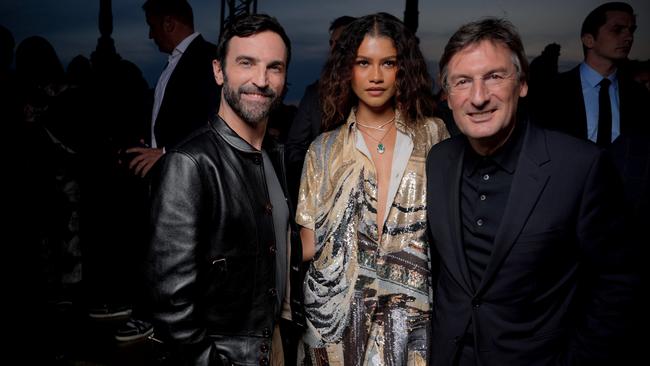
Beccari’s latest sports bet was the Formula 1 Louis Vuitton Australian Grand Prix 2025, part of LVMH’s 10-year major investment in the increasingly popular sport. Which brings the chief executive to the third key connection: the pursuit of excellence. “Preparation, diligence, taking care of details and wanting to innovate in everything you do is part of sports. At Formula One, there is a silence that precedes the race. Visiting a box where everything is quite medical, it’s like a surgery room. It’s incredible,” he insists.
Beccari sees a similarity in his visits to Louis Vuitton’s top-level bespoke atelier at its historic headquarters in Asnières-sur-Seine north of Paris, where they build all the major sporting trunks. It’s an experience he describes as “something mystical. As it’s about preparation, it’s about taking care of details. And I think Louis Vuitton stands for that, too”.
Beccari has a reputation for handling talent skillfully, a doubly complicated feat given that all three of the LVMH brands he has managed had two designers: Karl Lagerfeld and Silvia Venturini Fendi at Fendi; Maria Grazia Chiuri and Kim Jones at Dior; and now Nicolas Ghesquière and Pharrell Williams at Louis Vuitton.
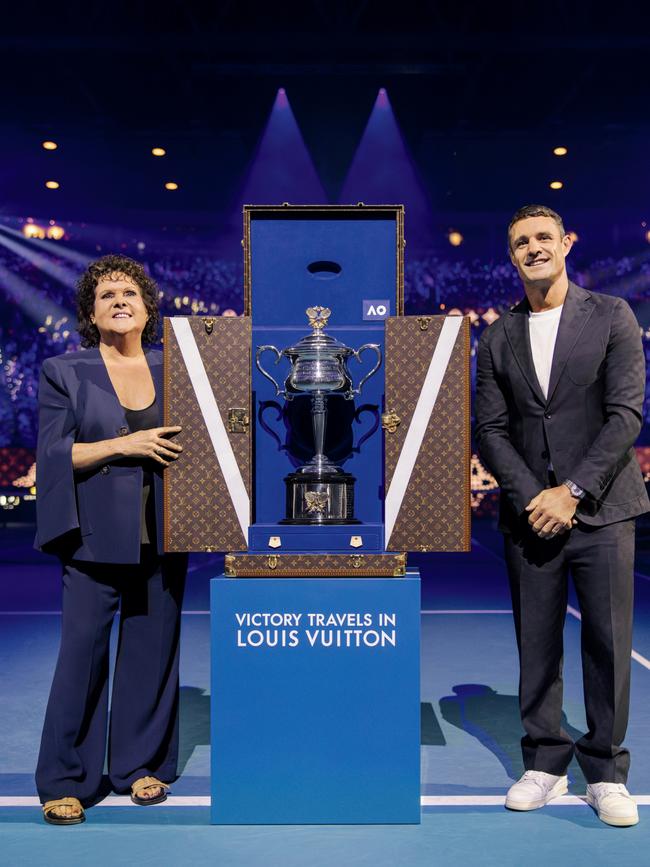
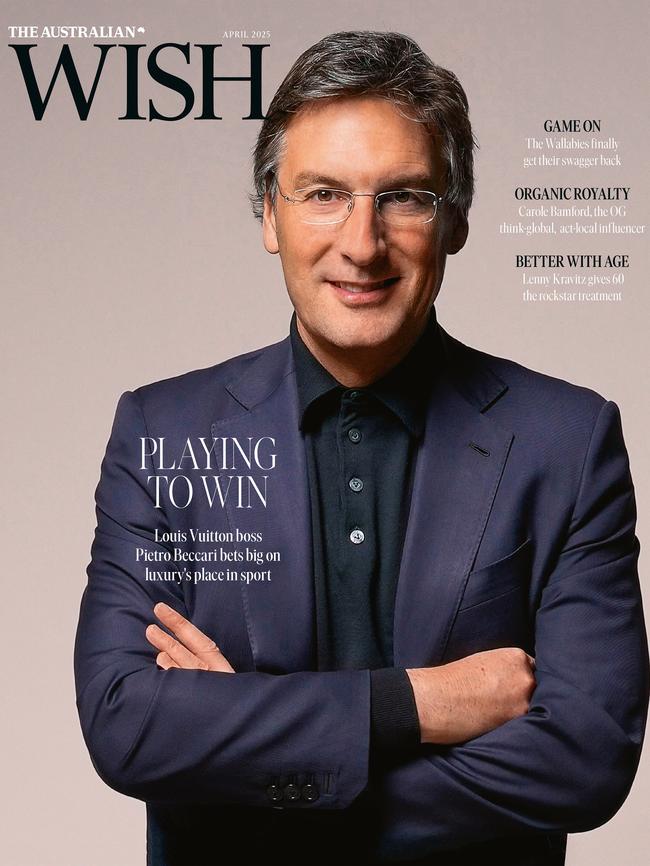
“That’s the beauty of having two eyes, two different eyes, two different minds on the same brand. To give us the chance to speak to a wider audience. Being market leader, we need different expressions,” he reasons.
Everywhere he goes, Beccari has impact. At Fendi, he grew business four-fold in six years, in part by inventing a whole new product category – jewellery for handbags, such as the legendary Karlito: a mini furry Karl Lagerfeld bag charm. He also managed to entirely renovate and transform Palazzo Fendi in Rome into a boutique hotel; move the company into a giant Rationalist-era HQ, Palazzo della Civiltà Italiana; and spearhead the renovation of the Fontana da Trevi, where Anita Ekberg swam in Fellini’s La Dolce Vita.
While at Dior, he completely rebuilt its Avenue Montaigne, Paris store into the most luxurious boutique in fashion. And invented La Galerie Dior, surely the most impressive exercise in prestige brand storytelling, bar none. The exhibition space features Monsieur Dior sketches; original couture gowns; the original cabine de mannequin for the New Look show; and audiovisual displays of the brand’s greatest designers, Yves Saint Laurent, John Galliano and Raf Simons included. There is a months-long waiting list to get in.
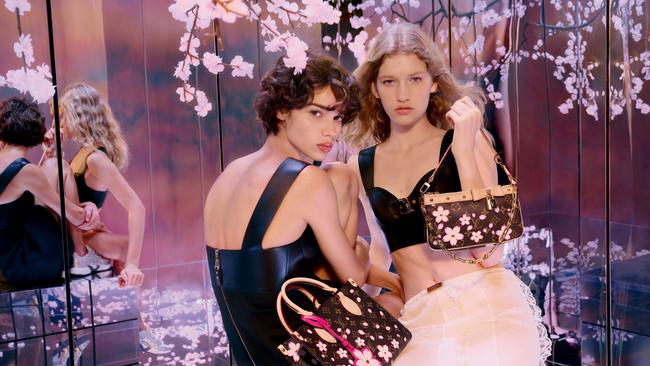
Though, looking back, Pietro likes to emphasise two particular runway shows.
“The [Dior] cruise show in Lecce, the first physical one after covid, when everybody said that the show concept was dead! And instead, we went with Maria Grazia to her hometown basically and showed in the Piazza del Duomo with the Orchestra Roma, an incredible show. Then [Egypt’s] Giza pyramids with Kim Jones, my last show at Dior. But the pinnacle was the Avenue Montaigne, which has become very important for the luxury industry today.”
He demurs when asked for his greatest hits to date at Louis Vuitton. However, an excellent example of his considerable powers of persuasion was convincing the mayor of Paris to let the house shut down Pont Neuf for 36 hours to host Williams’s debut presentation in June 2023. The A-list guest list included Beyoncé, Rihanna, Zendaya, Lenny Kravitz and Kim Kardashian.
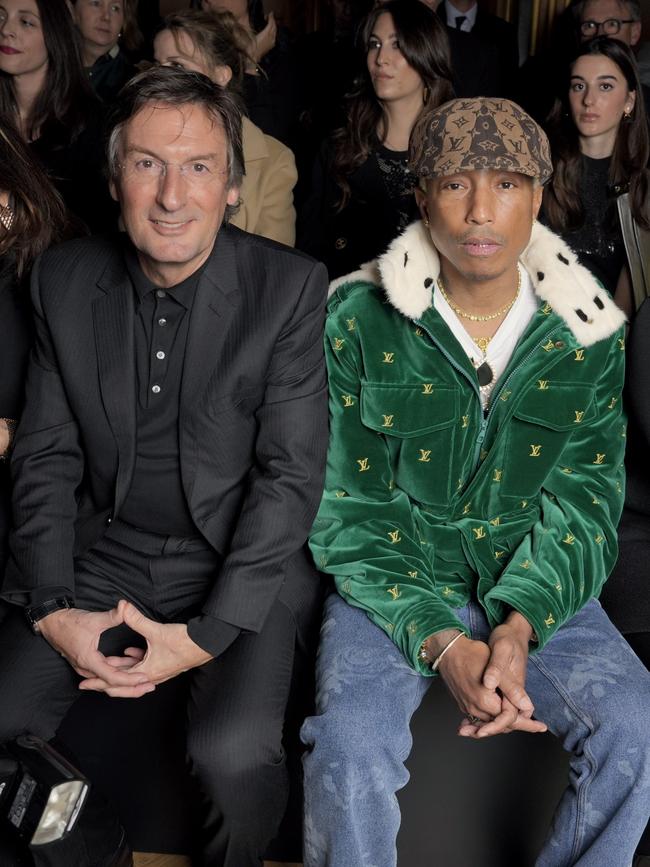
Next up is a Louis Vuitton hotel on Paris’s Champs- Elysées. “Let’s just say it will be surprising ... but for sure we’ll have to wait two years,” he cautions, noting again, “We are not only selling bags. We publish more than 15 books every year. We have now restaurants, a café in Doha, a chocolate shop, fragrances. We are in Formula One, we are in sports, we also sit with UNICEF. So, everything we do, as a scale, has an influence on society.”
In March the brand signalled its expansion into beauty, announcing Dame Pat McGrath as creative director for La Beauté Louis Vuitton.
Few brands have a bigger footprint than Louis Vuitton, with more than 460 stores worldwide. In Australia alone, LV boasts 13 boutiques (including four in Melbourne), and a further three in New Zealand.
“Australia is big for us. But the Australian market has been hit by this increase of interest rates, particularly significant for a country where real estate is one of the big builders of fortune. There are many billionaires in Australia. There has been a slowdown in 2024. We see more clear water in 2025 and we believe in the Australian market. We have many, many VVICs [very, very important clients] coming from Australia. Therefore, we are happy that we could offer them the first Grand Prix named Louis Vuitton in Melbourne.”
Beccari’s latest success story is the second collection by Takashi Murakami. The brand is so tight with the Japanese artist that it temporarily installed their collaborative artwork, the giant gold Flower Parent and Child sculpture atop a huge LV trunk, in the Jardin d’Acclimatation amusement park beside the Fondation Vuitton in Paris. The piece was relocated from the Kyoto City KYOCERA Museum of Art to mark the launch of Louis Vuitton x Murakami Chapter Two.
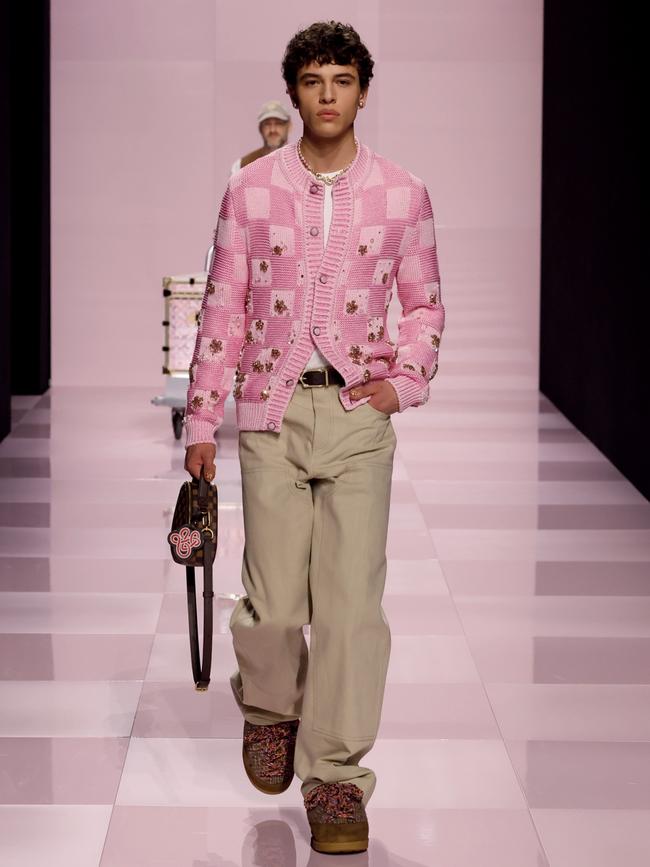
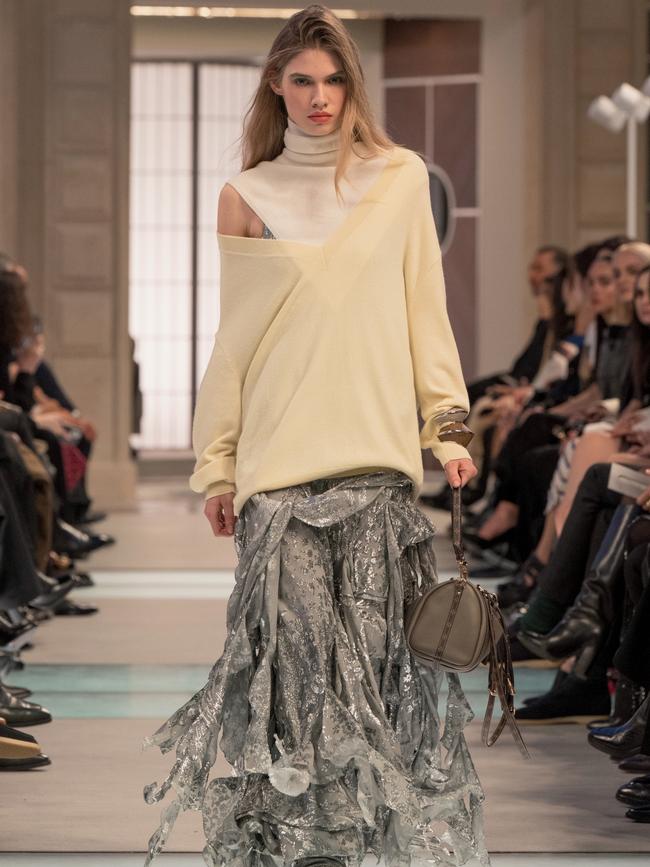
Beccari says the Murakami collection meant “really a lot of excitement if you look at the secondhand market prices which [skyrocketed]. You can buy bags now for three times what they cost in the store. Already! They’re even selling the cardboard cups we did for our pop-ups, for 50 euros! Paper cups that we were giving for free. So, I would call it big success!”.
How does he judge the success of things? Beccari is circumspect. “You know, surprisingly, we don’t measure this type of operation in a very systematic or scientific way. I think that with Monsieur Arnault, when taking decisions, what’s most important is to go with our instinct. With what we feel is good for the brand.”
Though, the central equation in Beccari’s career is, of course, his relationship with the lord of luxury, Bernard Arnault. During his two tenures at Louis Vuitton, Beccari also formed a close working relationship with Arnault’s eldest son Antoine.
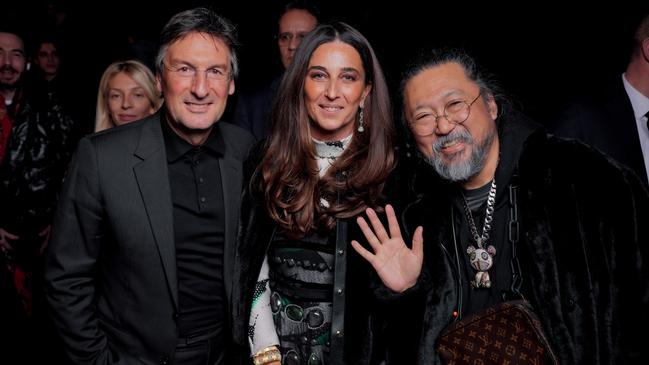
“Well, after many years, I would say that there is also a level of affection and gratitude for what they allow me to accomplish with them. It’s this long-term vision that goes beyond results every six months. What counts is to be able to build this brand for the future generation. So, I think this long-term vision and this sense of family remains, despite the 200,000 people involved in the group. And yes, there is the pressure of the results. But also, underneath, the allowance that you have to do the right thing for the long term.”
Before LVMH, Beccari did stints with local Parma dairy group Parmalat and with German manufacturer Henkel. As a result, as Lagerfeld liked to say, “Pietro speaks the big four”, meaning he is fluent in English, French, German and Italian. Just like Karl, though, the hyper-busy executive speaks to everyone in the exact same tone of voice, from someone sweeping the floor of a studio to a head of state. Staffers note that within weeks of taking up a new post, Beccari remembers the names of everyone in the building.
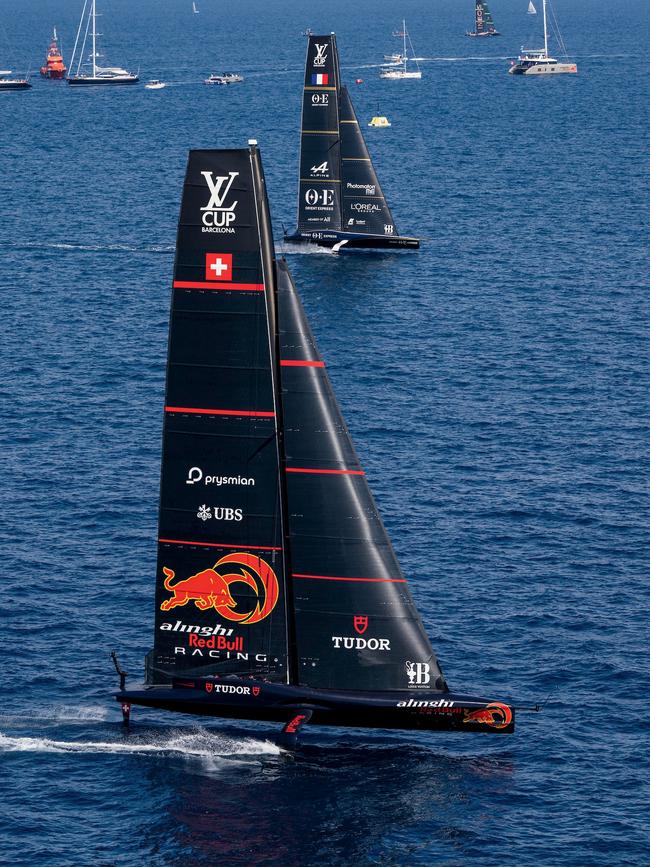
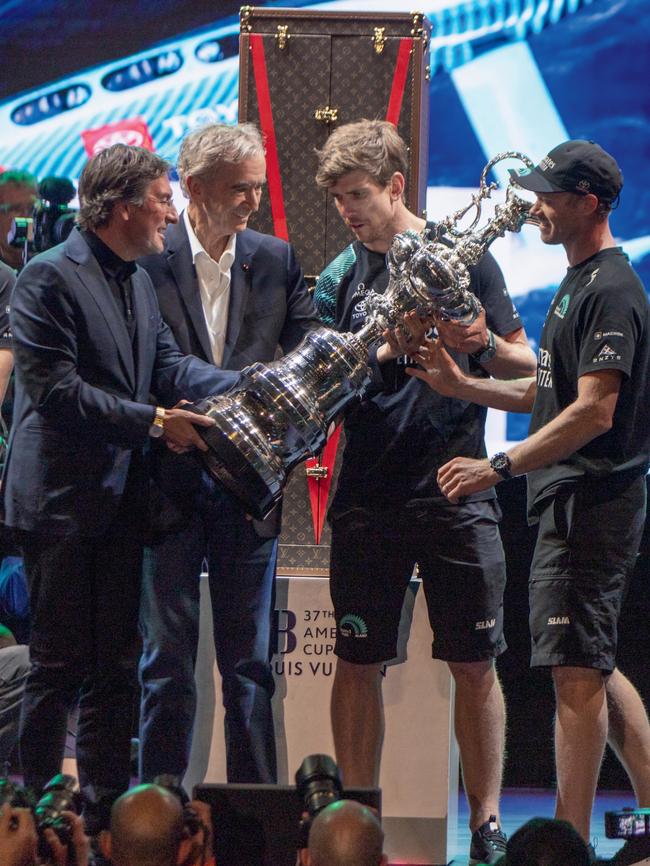
Life was certainly good with Karl and Fendi in Rome. Beccari lived in a beautifully restored former greenhouse with views across the Eternal City. It was an idyllic time for his wife Elisabetta and their three daughters Costanza, Carolina and Allegra. He admits, though, that balancing career and family has been challenging.
“It’s the most difficult part. As I said, you need to be obsessed to succeed in a way. And I think my family pays the price, because they do not always have the best of me. And I’m regretting that, I know that. I’m trying to work on it, but there are not many solutions. Nevertheless, when we are on vacation and we are together, we are great. I’m glad I have a fantastic family that supports me a lot and help me to think that important things are lying elsewhere than the job. But the balance between the two is difficult,” he concedes candidly.
Those vacations are often spent at the family chalet in the Dolomites. He often skis in the company of his old school pals from Parma. Friends recount that the locals appreciate Beccari’s success so much, they will open the chair lifts especially early for the executive.
Fortuna Audaces Iuvat. Fortune favours the bold.
This story is from the March issue of WISH.




To join the conversation, please log in. Don't have an account? Register
Join the conversation, you are commenting as Logout